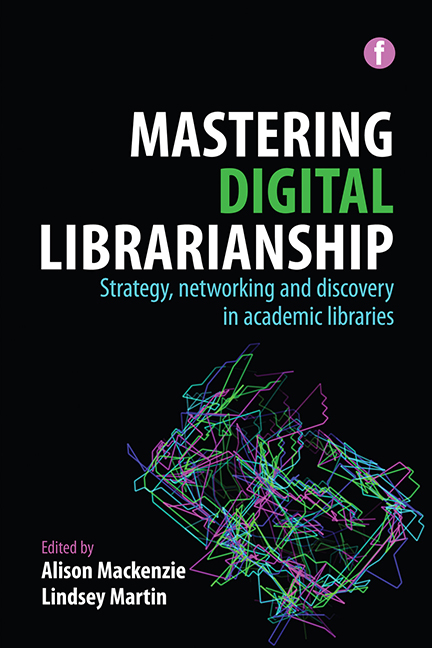2 - Reference 2.0: evolution of virtual reference services and social media
Published online by Cambridge University Press: 13 September 2022
Summary
Introduction
The emergence of digital technologies has provided significant oppor tunities for academic libraries to expand their service offerings. Technologies are now embedded in library services and almost all academic libraries across the globe offer some sort of digital enquiry service. These include free cloudbased services, such as Facebook and Twitter, as well as proprietary software and hardware hosted locally on a feeforservice basis. This chapter offers an overview of the literature outlining the history of virtual reference, from email systems to what is being described as Reference 2.0 using the current phenomenon of social media tools. Taking an Australian perspective, an institutional case study contextualizes the evolution of these services and is followed by an examination of the adoption of virtual reference services in Australian academic libraries. The chapter identifies some common Reference 2.0 success factors and offers a framework to assist in the choice, development and evaluation of new digital tools for enquiry services.
Literature review
As a considerable amount of literature exists on the use of technology in providing digital enquiry services within academic libraries, this review will focus on the history of virtual or digital reference and the mechanisms used for the evaluation of such tools.
From reference to literature1.0
Libraries began offering reference services in the mid to late 19th century, which became an established service in the 1890s (Fritch and Mandernack, 2001; Levinson, 1988). An early definition of reference work from this period is, ‘the assistance given by the librarian to readers in acquainting them with the intricacies of the catalogue, in answering questions and in short, doing anything and everything in his power to facilitate access to the resources of the library’ (Fritch and Mandernack, 2001, 288). This definition still applies in the present day; however, the introduction of new communication technologies has enhanced the provision of services.
According to Janes (2008, 8) there is no consensus on how to refer to the practice of electronic reference. Terms include digital reference, virtual reference, realtime reference, chat reference, live reference, and so on. For the purposes of this chapter we will refer to ‘virtual reference’, using the American Library Association (ALA) definition of ‘a service initiated electronically … where patrons employ computers or other Internet tech nology to communicate with reference staff, without being physically present’ (American Library Association, 2004, 1). .
- Type
- Chapter
- Information
- Mastering Digital LibrarianshipStrategy, networking and discovery in academic libraries, pp. 23 - 40Publisher: FacetPrint publication year: 2014



